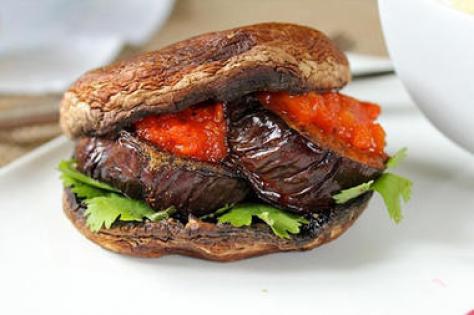A snap from my time in Greece in 2014
As we discussed here yesterday, living a healthy lifestyle and maintaining your healthiest weight can prevent or delay the onset of type 2 diabetes. This is great news right!
The problem is, with the co-existence of the weight loss industry promoting every fad under the sun, and an obesogenic environment placing convenient food options at an arms reach, the meaning of living a healthy lifestyle is often blurred. As a dietitian helping people to eat for health, I do not recommend ‘diets’ or restrictive eating behaviours. Instead, I help people find their own healthy balance that eventually becomes a lifestyle that they can sustain and enjoy. I also consider the evidence around different eating patterns and how they help different population groups. I try and integrate this evidence wherever possible and appropriate. If we look at an eating pattern that is leading the way to help lower diabetes incidence, manage a healthy weight and reduce cardiovascular disease, there is no doubt that the Mediterranean way is winning.
So lets take a look at some key components of the Mediterranean eating pattern and enjoy some pic's from our recent trip to Italy and Greece.
A photo taken while completing 'The Walk of the Gods,' on the Amalfi Coast, Italy in 2014 - Just STUNNING!
An Extra Drizzle of Olive Oil Please
Sorry coconut oil lovers but when we look at the evidence, nobody can argue that olive oil is winning the race for the healthiest daily oil to use. NOBODY.
The Mediterranean way is not consistent with the outdated approach of low fat eating, as it boasts a good intake of foods rich in healthy fats such as nuts, oily fish and an extra drizzle of olive oil with most meals. These fats are protective against cardiovascular disease, a strong risk factor for type 2 diabetes. Meals higher in healthy fats can also keep us feeling full and satisfied, helping to manage food portion sizes and reduce that urge for nutritionally poor snacks between meals.
Hold the Red Meat
Red meat appears on plates just every 'now and then' in the Mediterranean region. Instead of red meat, the predominant protein sources are legumes, eggs, fish, shellfish, white meats such as chicken and turkey and a bit of yoghurt and cheese each day. Replacing red meat with these alternatives (majority of the time) may help to lower the unhealthy, saturated fat in your diet and prevent type 2 diabetes.
Lots of legumes
Legumes are a main feature in the Mediterranean diet. Whether canned or dried, legumes such as lentils, kidney beans and chickpeas really are natures own ‘super food’ as these little beans are loaded with various nutrients such as protein, protective fibre, healthy fats and low glycemic index (GI) carbohydrates. Even better, all of these nutrients are delivered at a low cost and can be served as a source of protein in replace of meat. It is recommended to enjoy these little gems at least 2-3 times a week.
Fill up on vegetables
Every healthy way of eating includes plenty of vegetables, including the Mediterranean way, which is a very plant-based way of eating. Filling up on non-starchy vegetables with most meals (not just dinner) will only provide you with the goodness of fibre, vitamins and minerals without the extra energy you may not require. Starchy carbohydrates such as potato, sweet potato and corn are also important, however if your energy requirements do not call for a large serve just allocate these vegetable to one quarter of your plate, just enough to keep you satisfied.
Nuts About nuts
The Mediterranean’s are just nuts about nuts and so are we. If you attempt to follow a ‘low fat’ diet you would automatically put the nuts back on the shelf after carefully reviewing the nutrition information panel. This is because nuts possess a large amount of fat. But this fat is GOOD and can keep our blood vessels healthy. Furthermore, nuts are jam packed with nutrients such as vitamin E (an antioxidant), zinc, B vitamins and fibre just to name a few. Although they are high in fat, there is evidence to show that enjoying a small handful a day (about 30-40 grams) can assist with weight loss, potentially due to the ability of nuts to keep us satisfied in a small dose. Any tree nut is a healthy choice, so whether is it macadamias, pistachio’s, almonds or cashews, just hold the salt, and you have yourself a perfect healthy snack.
Just like every healthy way of eating, the Med's way is about the whole eating pattern and lifestyle and not just about one food group or nutrient in particular (e.g. quitting sugar). This way of life also involves sharing and celebrating food with loved ones. So take a leaf out of the med’s book and sit down with your loved ones and share some of these beautiful foods - and enjoy every moment.
Here are some snaps from my holiday in Italy and Greece last year - these give some beautiful insight into the Mediterranean way.
Delicious sardines, lightly fried in olive oil and drizzled with lemon
Fried zucchini with a garlicy yoghurt sauce
Traditional Greek salad drizzled with olive oil
Santorini fava - made with yellow split peas (legumes)
A picture says a thousand words...
Amazing mussels and squid matched with a Greek salad - loaded with healthy fats and full of goodness
Grow your own and eat fresh and seasonal
Berries at the Venice Farmers Markets
Exercise is a key component of the Meds way and a key factor in reducing your risk of type 2 diabetes












